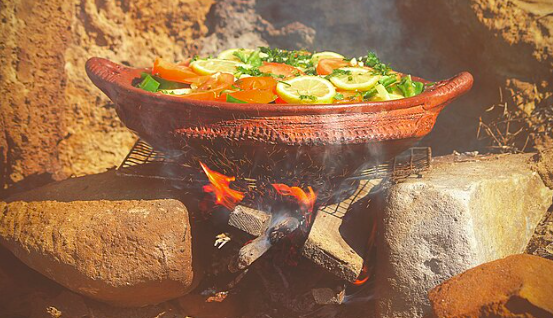Artichokes: A Healthy Culinary Delight

By: Habeeb Salloum/Arab America Contributing Writer
A native of the Mediterranean basin where the plant today is still found in the wild, artichokes were for many centuries unknown as a food in Europe. Strange as it may seem, they were cultivated in the Greek and Roman worlds, but in the ensuing years the art of growing them for food was lost. The Arabs were responsible for their re-introduction into that continent by way of the Iberian Peninsula.
In about the 14th century, artichokes became somewhat well-known, especially in Italy where they became popular for making soups. Today, in Europe, almost all the languages derive their name for artichokes from the Arabic al-khurshūf, attesting to the Arab origin of this toothsome garden vegetable.
The Spaniards brought the artichoke plant to the Americas. In the U.S.A., more than in any other region of the country, they thrive in California where, today, almost the entire commercial crop of about 70 million pounds is grown. Castroville in that state claims to be the artichoke capital of the world.
Throughout my travels to many parts of the world, I have had the opportunity to taste the cuisine of many lands. In the case of artichoke, one of the most memorable dishes I enjoyed was a tajine served to me in the city of Fez.
Moroccan Artichoke Tajine

Serves about 4
1/2-pound beef or lamb, cut into 1/2-inch cubes
4 cloves garlic, crushed
1 can chickpeas (19 oz. 540 ml.) with its water
4 tablespoons olive oil
1 1/2 teaspoons ginger
1/4 teaspoon pepper
Pinch of saffron
1 can artichokes (14 oz. 398 ml.) quartered, and the water reserved
1/2 cup pickled green olives, pitted
In a saucepan, place the meat, garlic, chickpeas, olive oil, ginger, pepper and saffron, then cover with water and bring to a boil.
Cook over medium heat for 45 minutes, then add the artichokes with their water and the green olives.
Cook for a further 30 minutes, then serve hot.



